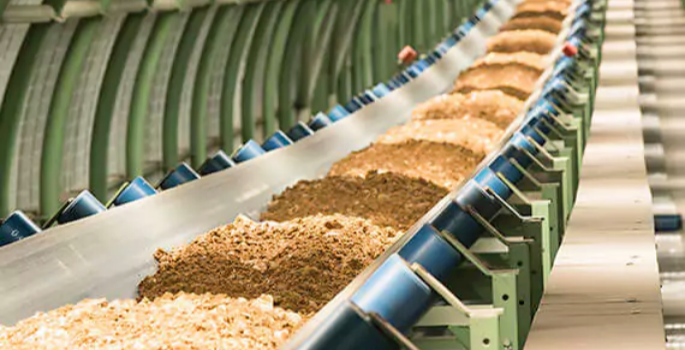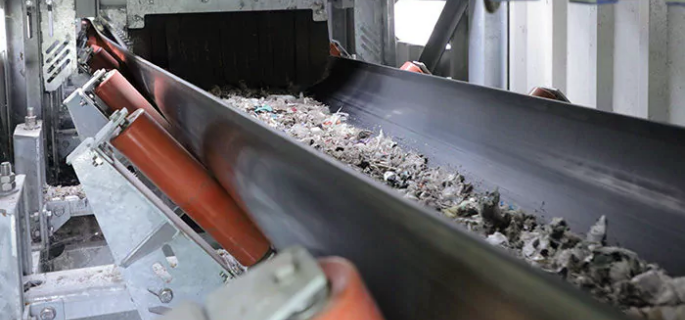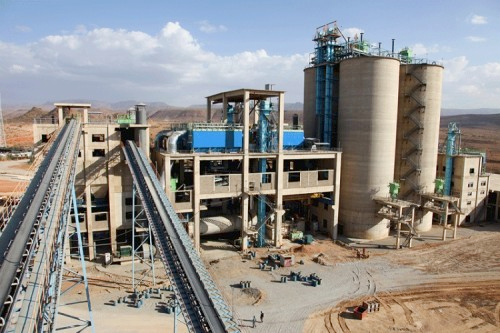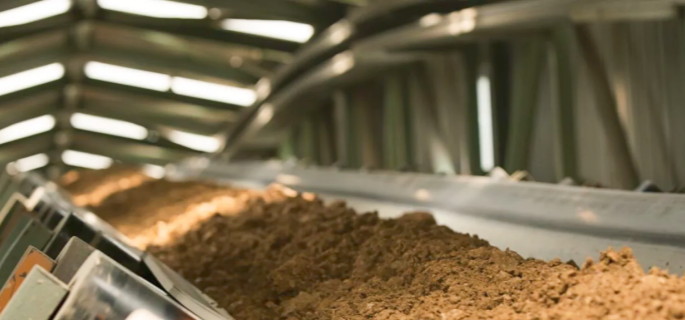Uses of Belt Conveyor System And How Does It Work
Belt conveyor systems are integral to the seamless operation of various modern industries, offering an efficient and reliable method for moving goods and materials over both short and long distances. The versatility of these systems is evident in their ability to handle a wide array of materials, from bulky boxes in warehouse settings to delicate components along assembly lines. This blog explores the uses of belt conveyor systems across different sectors, emphasizing their adaptability and critical role in optimizing workflows and increasing productivity. Whether in mining operations, food production, or part of a complex airport baggage handling system, conveyor belts are tailored to meet diverse industrial needs, showcasing their utility in a multitude of environments.
The Basics of Belt Conveyor Systems
Belt conveyor systems are vital in facilitating the movement of materials across various industries. They consist of a looped belt made from materials such as rubber, fabric, or synthetic elements that is supported by rollers or a flat pan along its path. Here we explore the foundation and diverse uses of belt conveyor system, offering insight into how they adapt to different industrial needs.
Definition and Components: A belt conveyor is a mechanical system that transports materials along a predetermined path from one point to another. It is composed of several key components:
- Frame: Provides the structure that supports the conveyor belt and any materials being transported. It must be sturdy and designed according to the load requirements and the operating environment.
- Belt: The central component of the conveyor, which directly carries the material. Its material composition can vary based on the application, whether for light or heavy goods, and might need specific properties like resistance to heat, oils, or chemicals.
- Pulleys: These are the wheels over which the belt moves. The system typically includes at least one motorized pulley to drive the belt and may also have one or more idler pulleys to guide and maintain tension on the belt.
Diagram: To illustrate, a simplified diagram of a belt conveyor system is provided. This diagram shows the essential setup with the motorized drive pulley at one end, the belt extending between it and the idler pulley, and the frame supporting the entire operation. This visual aids in understanding how these components work together to fulfill the uses of belt conveyor system, efficiently transporting materials within facilities.
How A Belt Conveyor System Works
Uses of belt conveyor system: It designed to transport materials, goods, and even people from one point to another with minimal effort.Ideal for manufacturing, bulk handling, and industrial applications.These are ubiquitous in industrial applications, enhancing efficiency and productivity across various industries.
A belt conveyor system is a common piece of material handling equipment that consists of two or more pulleys (sometimes referred to as drums), with a continuous loop of material—the conveyor belt—that rotates around them. Here is a detailed breakdown of how it works:
Working Principle of a Belt Conveyor System:
Load Placement:
- Material is placed on the conveyor belt at the loading point.
Drive Mechanism:
- The motor powers the drive pulley, causing it to rotate.
- The drive pulley’s rotation moves the conveyor belt along the system.
Material Transport:
- As the conveyor belt moves, it carries the material from the loading point to the discharge point.
Idler Pulley and Rollers:
- The idler pulley and rollers support the conveyor belt, reduce friction, and help maintain belt tension and alignment.
Discharge:
- Material is discharged from the conveyor belt at the designated point, often into another conveyor, chute, or storage area.
Return Cycle:
- After discharging the material, the empty belt returns to the loading point over return rollers, ready to carry the next load.
Understanding these components and principles can help in designing, maintaining, and troubleshooting belt conveyor systems effectively.

6 Industrial Uses of Belt Conveyor Systems
Belt conveyor systems are versatile and widely used across various industries due to their efficiency and reliability. Here are six common uses of belt conveyor systems in industries:
Mining Industry:
- Material Handling: Belt conveyors are used to transport bulk materials like coal, ore, and minerals from mines to processing plants or storage facilities.
- Overland Conveyors: These long-distance conveyors transport materials over rugged terrains and significant distances.
Manufacturing Industry:
- Assembly Lines: Belt conveyors facilitate the assembly of products by moving components through different stages of production.
- Packaging Lines: They are used to transport products through packaging machines, ensuring efficient and continuous operation.
Food and Beverage Industry:
- Food Processing: Belt conveyors move raw materials through various processing stages, such as washing, cutting, cooking, and packaging.
- Beverage Bottling: They transport bottles and cans through filling, capping, labeling, and packaging processes.
Logistics and Warehousing:
- Sorting and Distribution: Belt conveyors are used in sorting centers to move packages through various stages of sorting and distribution.
- Loading and Unloading: They facilitate the loading and unloading of goods from trucks, reducing manual labor and increasing efficiency.
Agriculture Industry:
- Harvesting and Processing: Belt conveyors transport harvested crops from fields to processing plants, where they are cleaned, sorted, and packaged.
- Fertilizer Handling: They are used to move bulk fertilizers to storage areas or directly to the fields for application.
Construction Industry:
- Material Transport: Belt conveyors transport construction materials like sand, gravel, and cement to different parts of a construction site.
- Debris Removal: They help in the removal of construction debris and waste, maintaining a clean and safe work environment.
Additional Uses:
- Recycling Industry:
- Belt conveyors are used to transport recyclable materials through various stages of sorting, cleaning, and processing.
- Automotive Industry:
- They facilitate the movement of vehicle parts through various stages of assembly and inspection.
Benefits in These Applications:
- Efficiency: Continuous movement of materials increases productivity and reduces manual labor.
- Flexibility: Can be tailored to specific industry needs, with various sizes, speeds, and configurations.
- Safety: Reduces the need for manual handling, minimizing the risk of injuries.
- Cost-Effective: Low operating and maintenance costs make them a cost-effective solution for material handling.
These uses illustrate the importance of belt conveyor systems in enhancing productivity, safety, and efficiency across different industries.
Exploring the Diverse Applications of Belt Conveyor Systems
Belt conveyor systems are a backbone in many industrial processes, serving numerous functions across various sectors. This section delves deeper into the specific uses of belt conveyor system, showcasing their versatility and efficiency in different environments.
Industrial Applications
Belt conveyors are crucial in a wide array of industrial applications:
- Manufacturing: These systems streamline the production process by transporting materials and finished products between different stages of manufacturing smoothly and continuously. They are vital in assembly lines where speed and efficiency are paramount.
- Mining: In the mining industry, belt conveyors are used to transport large quantities of raw materials such as coal and ores from the mining sites to processing areas or transport vehicles. Their ability to handle rough and abrasive materials makes them indispensable.
- Packaging: Conveyor belts also play a key role in packaging facilities, where they move products through various packaging stages. They help in sorting, labeling, and wrapping products, significantly enhancing the speed and efficiency of packaging operations.
Specialized Applications
Beyond typical industrial applications, belt conveyors have unique uses that demonstrate their adaptability:
- Ocean Currents Studies: One fascinating application is in the simulation of ocean currents, such as thermohaline circulation. Researchers use conveyor belts to model and study these currents, helping them understand global climate patterns and marine ecosystem dynamics.
Chain Conveyors
While belt conveyors are versatile, chain conveyors serve distinct needs within industrial operations:
- Heavy-Duty Applications: Chain conveyors are typically employed where heavier loads or more rugged materials need to be transported. They are built with durable chains and can handle harsh conditions, making them suitable for industries like timber processing and heavy equipment manufacturing.
- Sharp or Hot Materials: Unlike belt conveyors, chain conveyors can transport hot or sharp materials without significant wear and tear, making them ideal for sectors such as metal manufacturing or automotive assembly.
Get reliable conveyor belts for your business.

Evaluating the Advantages and Disadvantages of Belt Conveyors in the Uses of Belt Conveyor System
Belt conveyor systems are widely recognized for their efficiency and versatility across various industries. However, like any mechanical system, they come with their own set of advantages and disadvantages, which are crucial to consider when integrating them into the uses of belt conveyor system.
Advantages
- Efficiency: Belt conveyors are highly efficient for transporting goods across large facilities, significantly reducing the time and effort required compared to manual handling. This efficiency is particularly beneficial in large manufacturing plants and distribution centers where time and speed are critical.
- Cost Reduction and Safety: Automating the transport of goods with conveyor belts reduces labor costs and minimizes human involvement in potentially hazardous operations. This automation not only cuts down on labor expenses but also significantly enhances workplace safety.
- Versatility: These systems are adept at handling a wide range of materials and products. From bulky boxes to delicate electronic components, belt conveyors can be customized with various belt types and configurations to suit specific needs, making them a flexible option in many industrial applications.
Disadvantages
- Initial Costs: The initial cost of setting up a belt conveyor system can be substantial. This includes the cost of the conveyor itself, installation, and the necessary infrastructure changes to accommodate the system.
- Handling Limitations: While belt conveyors are versatile, they have limitations when it comes to handling very small or irregularly shaped items. These items can be prone to slipping off the belt or causing jams, which can disrupt the smooth operation of the system.
- Maintenance and Wear: Over time, belt conveyors can suffer from wear and tear due to continuous use. Regular maintenance is required to keep them running efficiently, and parts like belts, motors, and rollers may need periodic replacement, which adds to the overall operational costs.
Technical Insights on the Uses of Belt Conveyor System
The technical intricacies and operational efficiencies of belt conveyors are vast and varied, catering to numerous industrial applications. This section provides deeper insights into the uses of belt conveyor system, focusing on available resources and integration strategies that enhance their functionality within broader system architectures.
Belt Conveyor PDFs
For those looking to expand their knowledge on belt conveyors, a wealth of detailed technical guides and operational manuals are available in PDF format. These documents cover everything from basic setup and maintenance to troubleshooting and optimization strategies. They are essential for engineers, technicians, and system designers who wish to understand the finer details of conveyor operation, including the specific uses of belt conveyor system in different contexts. These resources often include case studies, specification sheets, and installation blueprints, providing a comprehensive overview that aids in both education and practical application
Conveyor Belt Systems
The integration of belt conveyors into larger conveyor system architectures highlights their versatility and functionality. In complex industrial environments, belt conveyors are often part of a larger system that may include roller conveyors, chain conveyors, and automated sorting systems. This integration is designed to leverage the strengths of each conveyor type to optimize the transport and handling of materials. For instance, belt conveyors are typically used for the continuous, smooth transport of bulk materials over long distances, while roller conveyors might be used for accumulating products before packaging
Integrating belt conveyors within these larger systems allows for seamless material handling, reduces transition times between different conveyor types, and minimizes the need for manual handling, thereby enhancing efficiency and reducing costs. The strategic placement and integration also help in achieving a more cohesive flow of operations, contributing to a streamlined production process that can adapt to varying demands and operational conditions.

Global and Local Perspectives on the Uses of Belt Conveyor System
This section delves into the diverse applications and environmental considerations associated with the uses of belt conveyor system, examining how these systems are adapted and implemented around the world, with a specific focus on the Netherlands, and their ecological impacts.
Conveyor Belt Nederlands
In the Netherlands, conveyor belts are an integral part of various sectors including agriculture, logistics, and manufacturing. The country’s focus on innovation and sustainability has led to unique adaptations in conveyor technology. For instance, Dutch flower markets use highly automated conveyor systems to handle and sort vast quantities of flowers daily, optimizing speed and efficiency while reducing labor costs. Additionally, in the logistics sector, the Netherlands has implemented advanced conveyor belt systems in distribution hubs to enhance the speed and efficiency of parcel sorting and delivery, crucial for maintaining the flow of goods in and out of one of Europe’s key trading centers.
Environmental Impact
The environmental impact of conveyor belts is a significant consideration in their design and operation. Energy consumption is a primary concern, as traditional conveyor systems can be energy-intensive. However, recent advancements have focused on creating more energy-efficient motors and control systems to minimize electricity usage. Moreover, the materials used in manufacturing conveyor belts, such as rubber and plastics, pose concerns regarding sustainability and disposal. Efforts are underway to utilize more recyclable materials and to develop belts that have a longer life span to reduce waste. Additionally, the potential for pollution during the manufacturing and disposal phases is prompting companies to adopt greener practices and technologies, further aligning with global environmental standards.
These insights into the uses of belt conveyor system both globally and locally, as well as the environmental considerations, highlight the evolving nature of conveyor technology as it adapts to meet both industrial demands and ecological responsibilities. This broader perspective underscores the importance of integrating sustainable practices in the deployment and innovation of conveyor systems worldwide.

FAQs about Uses of Belt Conveyor System
Conveyor belting, a key component of conveyor systems, is used across various industries to facilitate the transport and handling of materials. Conveyor belts are designed to move products efficiently from one point to another, reducing the need for manual labor and improving workflow efficiency. In manufacturing, these belts are integral in assembly lines, helping to move parts through different stages of production and assembly. In the food industry, conveyor belts are used to transport ingredients and finished products, often designed to comply with health standards and easy cleaning requirements. Additionally, in sectors like mining and recycling, conveyor belts handle the movement of raw materials such as ores or waste products, showcasing their versatility and capability to work under harsh conditions.
Conveyor systems are utilized in a wide array of applications to streamline the movement, assembly, sorting, and processing of goods and materials. They are critical in industries such as automotive, where they facilitate the movement of parts across the production floor. In airports, conveyor systems manage luggage handling, from check-in to loading onto planes. Supermarkets and retail operations use conveyor belts at checkout points to improve the efficiency of the purchasing process. In agriculture, conveyors are used to move grain or other bulk products, greatly enhancing the efficiency of storage and distribution. Each application is tailored to the specific needs of the industry, proving the adaptability and efficiency of conveyor systems.
Conveyor belts have several use cases, each demonstrating their efficiency and necessity. For example, in the packaging industry, conveyor belts transport and organize products for easier and faster packaging and shipping. In pharmaceuticals, they facilitate the clean and precise movement of products through controlled environments. Conveyor belts are also used in material handling applications, including moving materials from trucks into warehouses or from storage areas into retail spaces. Even in entertainment, conveyor belts can be found in theme parks to move visitors in a controlled and steady manner. Each use case highlights the capability of conveyor belts to adapt to various operational requirements and environments.
A conveyor belt can be used in almost any environment where there is a need to move goods and materials from one place to another systematically. They are commonly found in warehouses to transport goods across different sections or in factories where they contribute to the production line by moving parts to various assembly points. Conveyor belts are also prevalent in the food processing industry, where they help in the sorting, processing, and packaging of food items. In more public settings, conveyor belts are used in airports for baggage handling and in grocery stores as part of the checkout counters. Their usage is widespread due to their ability to improve efficiency, safety, and productivity across diverse settings.
Conveyor belts are versatile tools used in various industries to facilitate the movement of materials efficiently and safely. Here are some key use cases:
Manufacturing: In manufacturing plants, conveyor belts are essential for assembly lines, transporting products from one workstation to another. They help in streamlining the production process and ensuring consistent output.
Mining: Conveyor belts are used to transport extracted minerals and ores from mining sites to processing plants. They handle heavy loads and work in harsh environments, significantly reducing the need for manual labor and increasing efficiency.
Food and Beverage: In the food industry, conveyor belts are used for processing, packaging, and transporting food products. They are designed to meet hygiene standards and ensure the safe handling of food items.
Warehousing and Distribution: Conveyor belts facilitate the efficient movement of goods in warehouses and distribution centers. They help in sorting, packing, and loading goods onto trucks, enhancing logistics operations.
Airports: Conveyor belts are crucial in airports for baggage handling. They transport luggage from check-in counters to loading areas and from planes to baggage claim areas, ensuring smooth and timely movement.
Agriculture: In agriculture, conveyor belts are used to transport crops, seeds, and other materials within farms or processing facilities. They help in reducing manual labor and speeding up processes like harvesting and packaging.
Recycling: Conveyor belts are employed in recycling plants to sort and transport recyclable materials. They enable efficient processing and separation of different types of waste.
These use cases highlight the importance of conveyor belts in enhancing productivity, efficiency, and safety across various industries.
Last Updated on July 10, 2024 by Jordan Smith
Jordan Smith, a seasoned professional with over 20 years of experience in the conveyor system industry. Jordan’s expertise lies in providing comprehensive solutions for conveyor rollers, belts, and accessories, catering to a wide range of industrial needs. From initial design and configuration to installation and meticulous troubleshooting, Jordan is adept at handling all aspects of conveyor system management. Whether you’re looking to upgrade your production line with efficient conveyor belts, require custom conveyor rollers for specific operations, or need expert advice on selecting the right conveyor accessories for your facility, Jordan is your reliable consultant. For any inquiries or assistance with conveyor system optimization, Jordan is available to share his wealth of knowledge and experience. Feel free to reach out at any time for professional guidance on all matters related to conveyor rollers, belts, and accessories.



